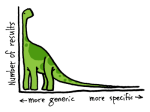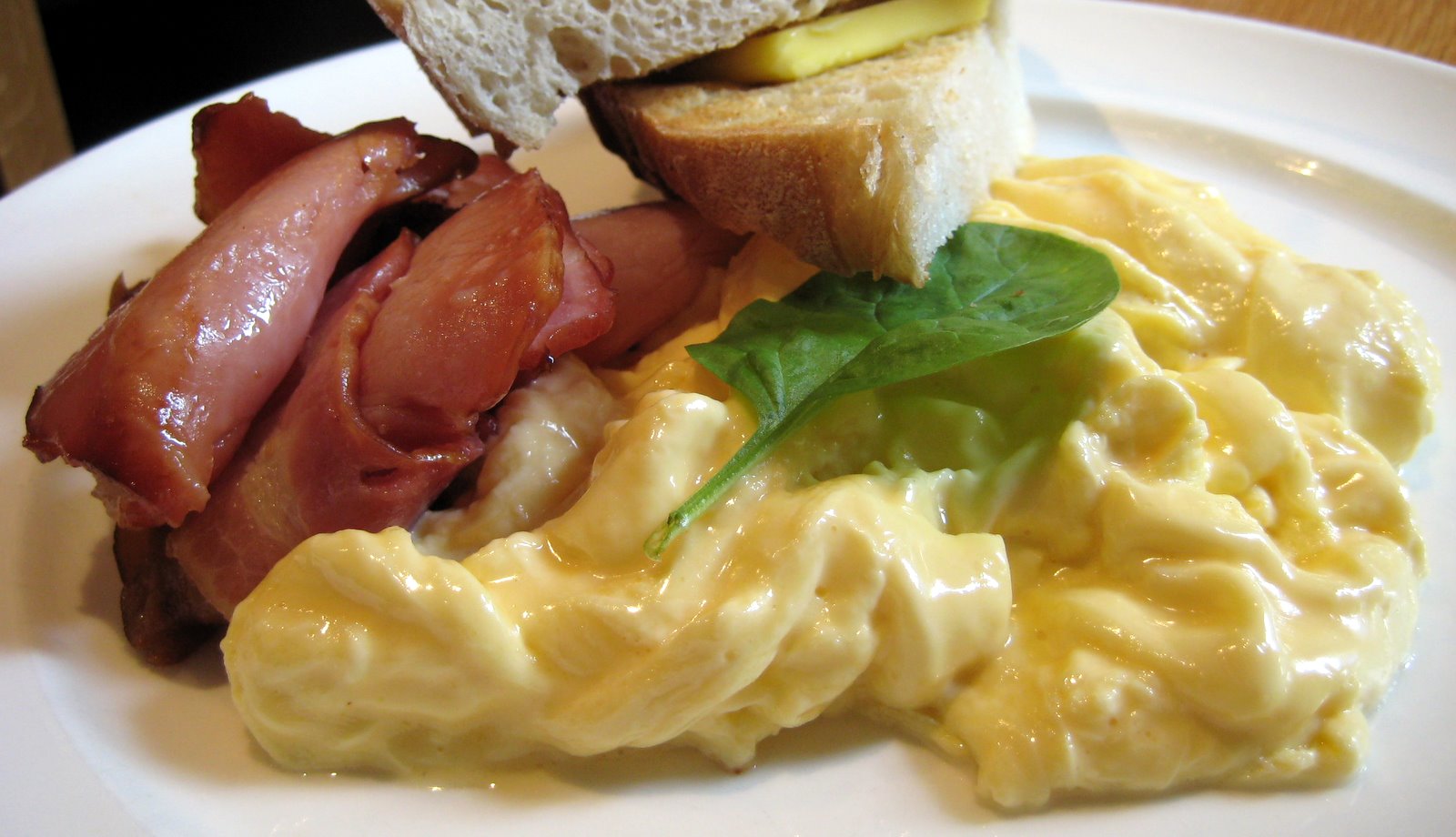“Blogs create communities of like minded people” – Geert Lovink.
No offence Geert, but I don’t think that’s a particularly prodigious observation. Of course blogs create communities of like minded people – people visit blogs for a reason, because they’re interested in what the blog has to say. One can safely assume that the producer of the blog is also interested (hopefully). So bingo. Target audience + specific content = like minded people. Niche blogging may have narrowed the field for these ‘like minded people’ by offering more specific content, but by making blogs more specific, surely followers of these blogs have a particular interest in the content being produced?
I’m just speculating here…
 I’m not saying that ‘like minded’ people will always agree. Just because you have a particular love for breakfasting in the general Carlton area does not mean that you will agree with me that the coffee at Cafe Cocca Nova is rubbish. Obviously though, this is not a matter of life and death and not likely to spark any particularly rousing debates. In my research for this subject, I have not come across any serious disagreements on Melbourne food blogs other than the odd ‘hey I kind of liked that restaurant you said wasn’t that great.’ Conversely, The Age online, a site I frequent much more than any food blog, receives a huge number of comments offering numerous differing opinions. (Now I’m aware that this is not a blog, but it’s the same principle and it receives more interesting posts than any food blogs.) One issue of late that has led to a great deal of user generated content and debate is the burqa: to ban or not to ban. This article recieved a comment from ‘confused’ in direct retaliation to the content posted in the piece.
I’m not saying that ‘like minded’ people will always agree. Just because you have a particular love for breakfasting in the general Carlton area does not mean that you will agree with me that the coffee at Cafe Cocca Nova is rubbish. Obviously though, this is not a matter of life and death and not likely to spark any particularly rousing debates. In my research for this subject, I have not come across any serious disagreements on Melbourne food blogs other than the odd ‘hey I kind of liked that restaurant you said wasn’t that great.’ Conversely, The Age online, a site I frequent much more than any food blog, receives a huge number of comments offering numerous differing opinions. (Now I’m aware that this is not a blog, but it’s the same principle and it receives more interesting posts than any food blogs.) One issue of late that has led to a great deal of user generated content and debate is the burqa: to ban or not to ban. This article recieved a comment from ‘confused’ in direct retaliation to the content posted in the piece.
“Another pathetic attempt at making this religion appear something it is not. Anyone who states with conviction that the niqab is not a symbol of oppression is clearly as radical and brain washed as the men that imposed these sanctions.”
– This comment is aggressive (“pathetic,” “brain washed”) and would be offensive to many people, but obviously ‘confused’ is not afraid to put his opinion out there.
I do agree with Geert Lovink’s belief that “if you disagree with a fellow blogger…it is much safer to post the remark on your own blog.” People use the web as a form of protection; they’re not scared to say things online they might not usually say face to face, but as Geert says, you’re less likely to step on toes if you do not directly comment a negative opinion on someone else’s blog. But if you’re really passionate about something and you’ve got a worthy opinion, why not just say it! But make sure it is said in a respectful manner. Nastiness is nastiness, face to face or over the web. Netiquette should be no different to the etiquette we use in our daily lives. Virginia Shea‘s book Netiquette states 10 specific rules of netiquette, including: ‘Adhere to the same standards of behavior online that you follow in real life,’ ‘Remember the human,’ and ‘Help keep flame wars under control.’ Worthy advice, Virginia.
I’m definitely more of a passive reader than an active commenter. Sorry new media, but I have not jumped aboard the citizen journalism train. Yeah yeah, blogs are interactive communication platforms, and I’m more than happy for people to comment on my blog, in fact I welcome it, I’m just saying, and perhaps I’m being too blunt here, but I usually just cbf. Despite my own inactivity, I am not unaware of the ever blurring line between producers and consumers of online content. Participatory culture is a crucial part of blogging’s appeal and it adds a certain sense of democracy to the whole process – freedom of information and participation.
I think wordpress’ feature of not automatically posting comments until the producer has the chance to approve/disapprove them is really clever. Unlike facebook and myspace, where possibly defamatory content can be posted for all to see without the user’s approval, this feature allows producers to moderate content and as such avoid any ‘flame wars‘ if they so desire. This also serves to protect online reputation; good thinking wordpress. Of course, this begs the question that in dsapproving possibly defamatory content to be posted, is democracy being stifled? It’s a tricky question, but I think one that must be left to the modifier’s discretion. If anyone posted anything (or anything at all!) offensive on this blog of mine, I would not approve it.













REFLECTION. NO OBJECTION.
I am not a blogger. In fact I’m not computer savvy in any way whatsoever. I mean, I only just realized that my laptop had a DVD drive. I am not joking. The extent of my Internet usage doesn’t really span beyond Google and Facebook and I’ve only just mastered Netbank.
But disclaimers out of the way now. Given that net communications was a compulsory Media and Communications subject, I thought it would focus more on the evolution from hard copy newspapers to online news and the differences between the two. I did not anticipate such a major focus on blogging, so in hindsight, this subject was probably not the best choice for me, given that I have never really had any interest in blogs.
Despite my best efforts, the intricacies of blogging still remain somewhat a mystery to me and my technical skills (or lack thereof) made the whole blogging process very difficult.
One such instance where my lack of blogging knowledge really let me down was the ‘frequency of posting’ element. I’m not trying to excuse myself at all, but it didn’t even cross my mind that when you start a post on the wordpress forum, the date and time is automatically recorded. I wrote all of my formal posts in Word first because I wanted to draft and redraft before submission. I thought that posting on wordpress was final and once posted could not be edited, so I was apprehensive to post anything. As such, all of my posts are now listed as being posted at the last minute. I’m very disappointed that I didn’t realize this earlier and understand that my mark will be significantly lower because of it. This is my face right now.
this is what my lack of net knowledge has done to me
Nevertheless, my one and only experience with the blogosphere was overall positive. In terms of the assignment itself, I really enjoyed the informal tone and ability to write however I wanted. On the negative side, I felt that in the end, my chosen niche of breakfast didn’t really have an overbearing presence on the blog, given the nature of the required posts. It seemed as though choosing a niche was completely unnecessary except for the ‘anatomy of a post’ post and the odd reference to a niche blog. I mean, when I’m out for breakfast I’m not thinking about the comment cultures and intellectual property, so I guess net communications and breakfast blogging didn’t really gel for me and I found it quite a strain to link the net communications posts to anything in the world of breakfast.
I found the platform of wordpress, hmmm, ok. I found it a bit restrictive in terms of design and it took me a long long longgggg time to work the simplest of things out like how to properly use the dashboard and the addition of a blogroll. Also, I hate the photo uploading tool. I hate it. I never worked out how to crop a picture, despite my best efforts, so several of the pictures I had for the blog never actually made it. If (and that’s a really big if) I ever decided to make another blog, I think I might give a different platform go. I must also add that my housemates and I chose he cheapest possible Internet connection, which several times resulted in me storming out of the room and slamming the door in wordpress’ face.
Overall, I think being a really good blogger requires a lot of passion and a great interest in what you write about. It’s a lot of hard work and for amateur bloggers without dedicated following, there is little return.
This is all sounding quite negative. I actually quite enjoyed the experience, I mean it was a good excuse to eat lots of scrambled eggs for ‘research purposes.’
My final bit of bloggy advice. Go watch The Breakfast Club while eating Small Block ricotta hotcakes. Heaven!
Leave a comment
Filed under Official Posts, Reflection
Tagged as comment culture, intellectual property, niche, Small Block